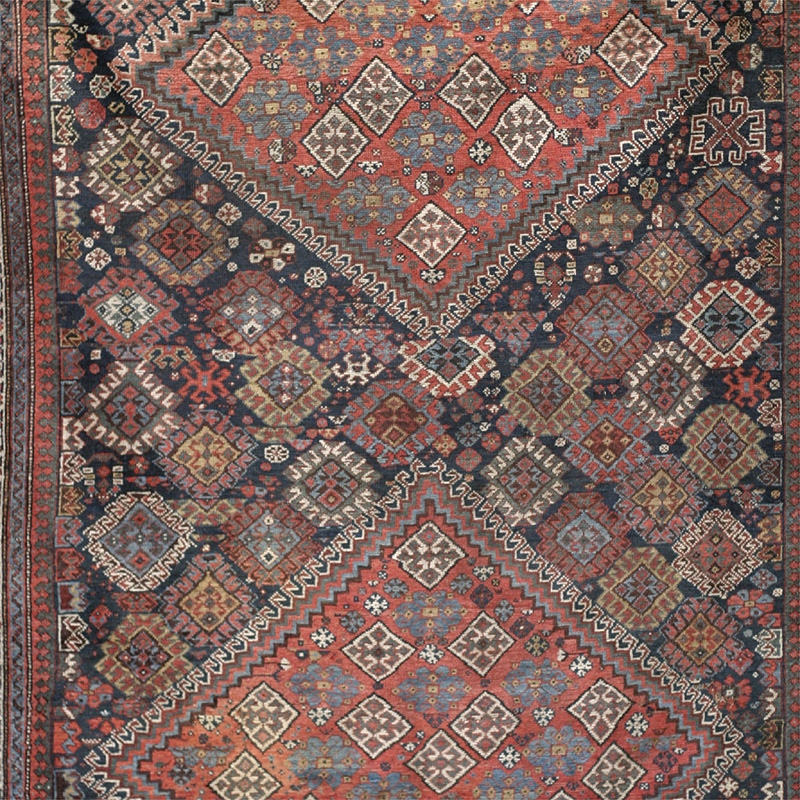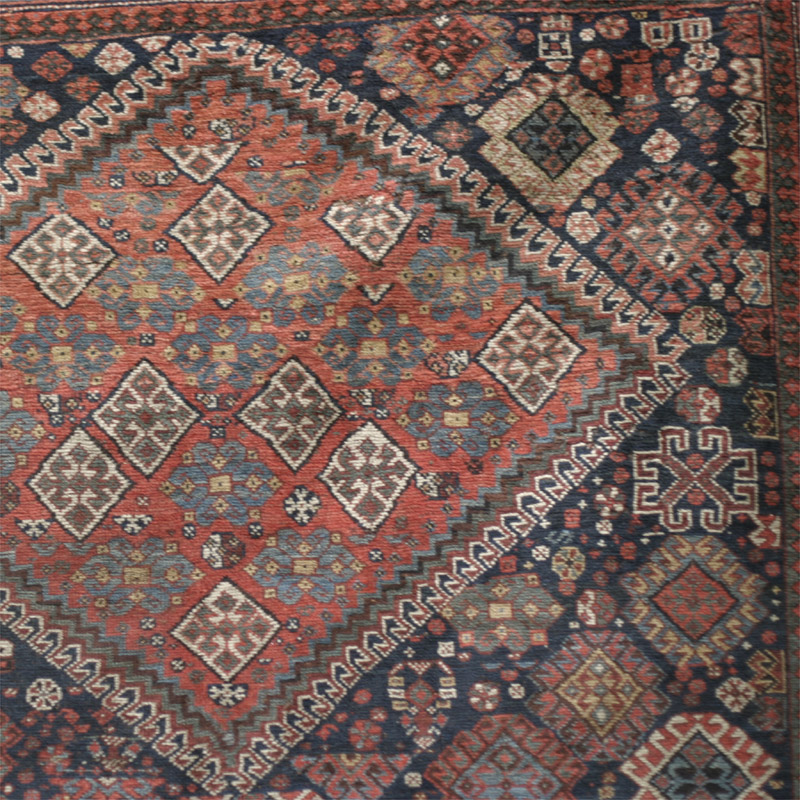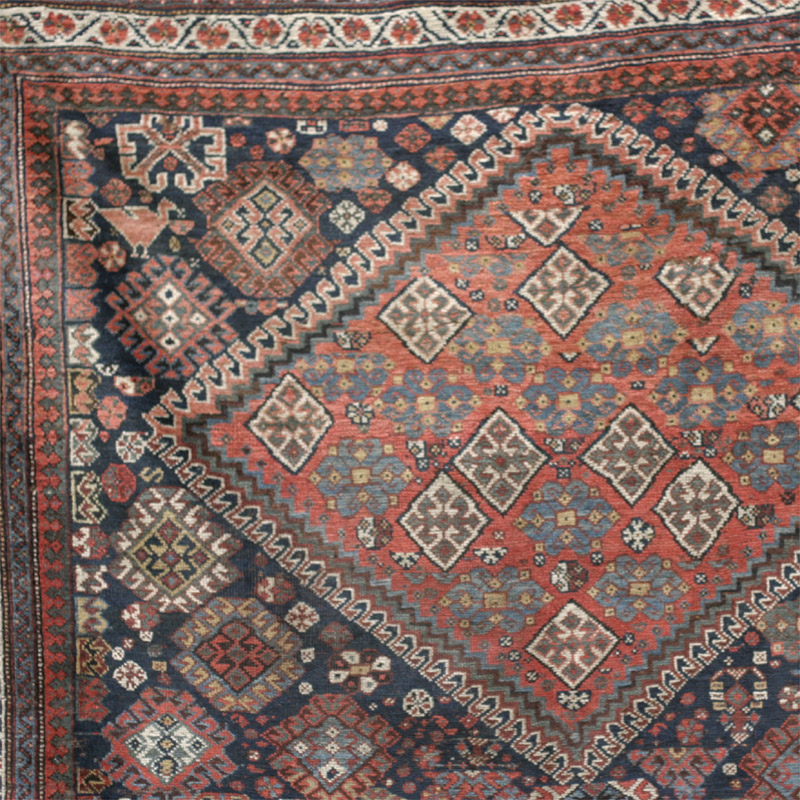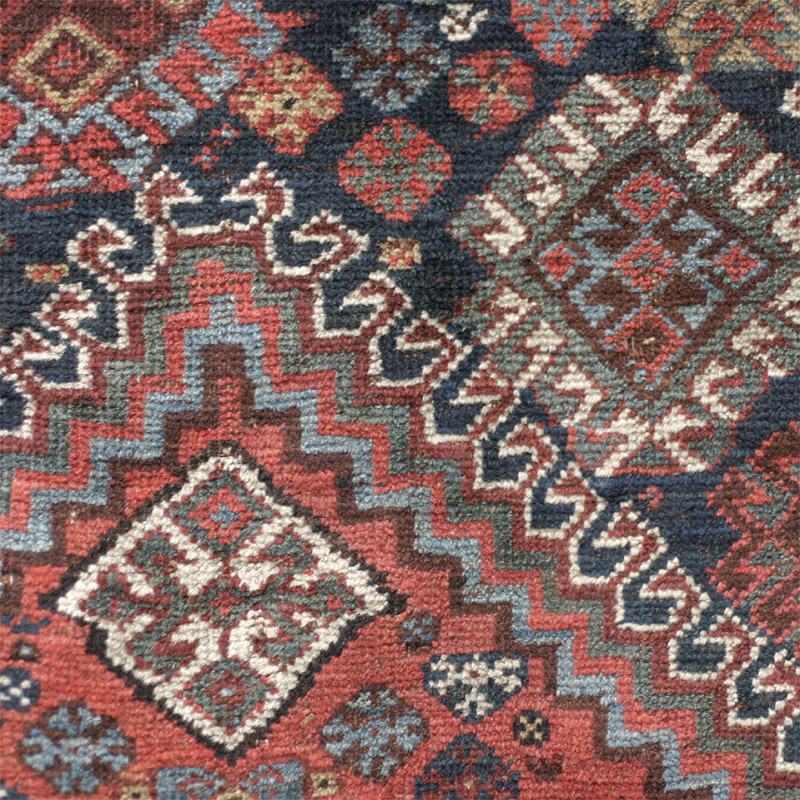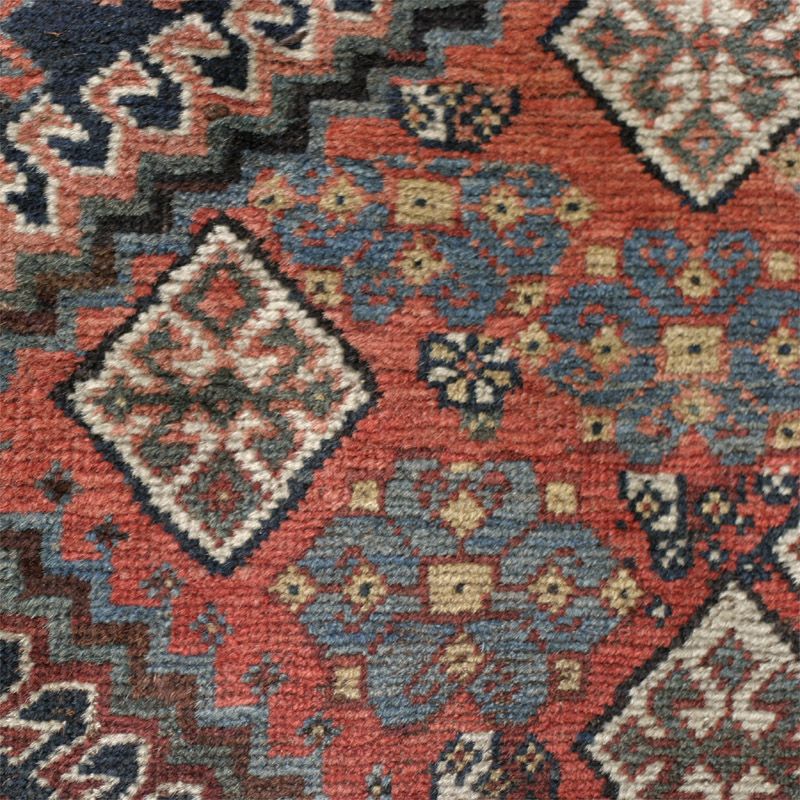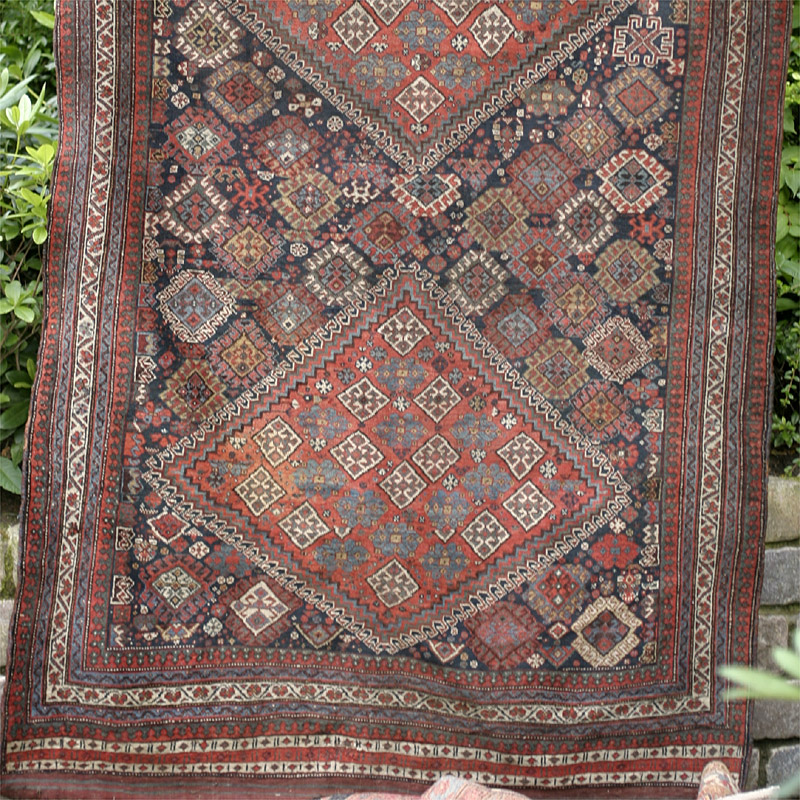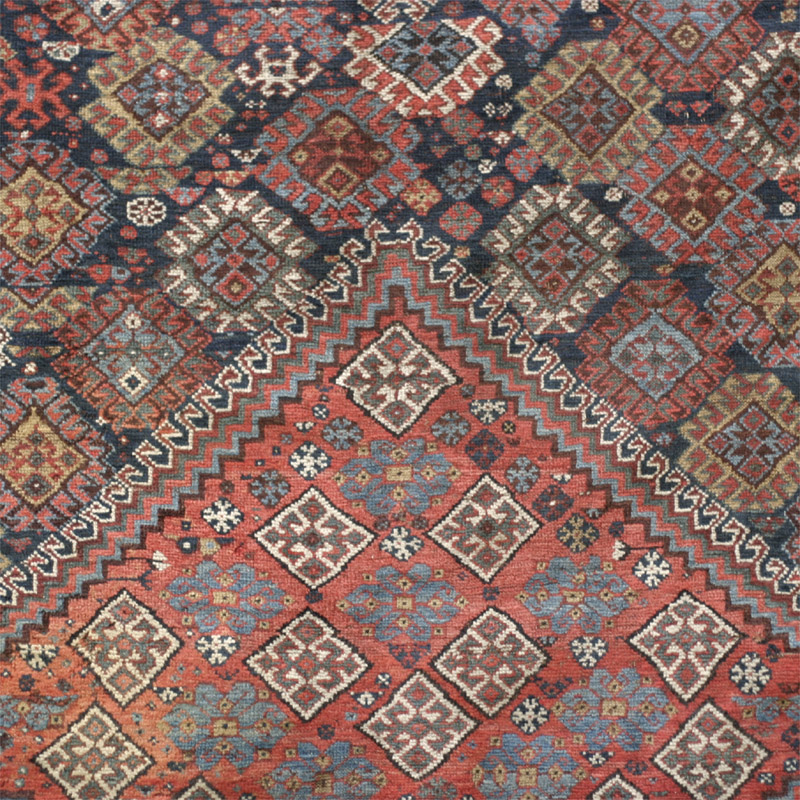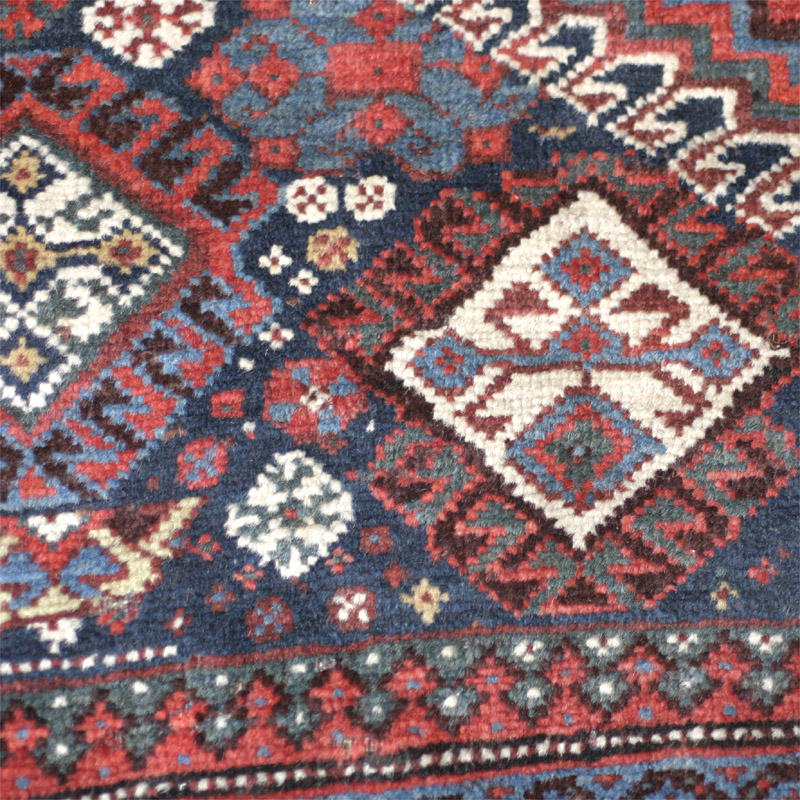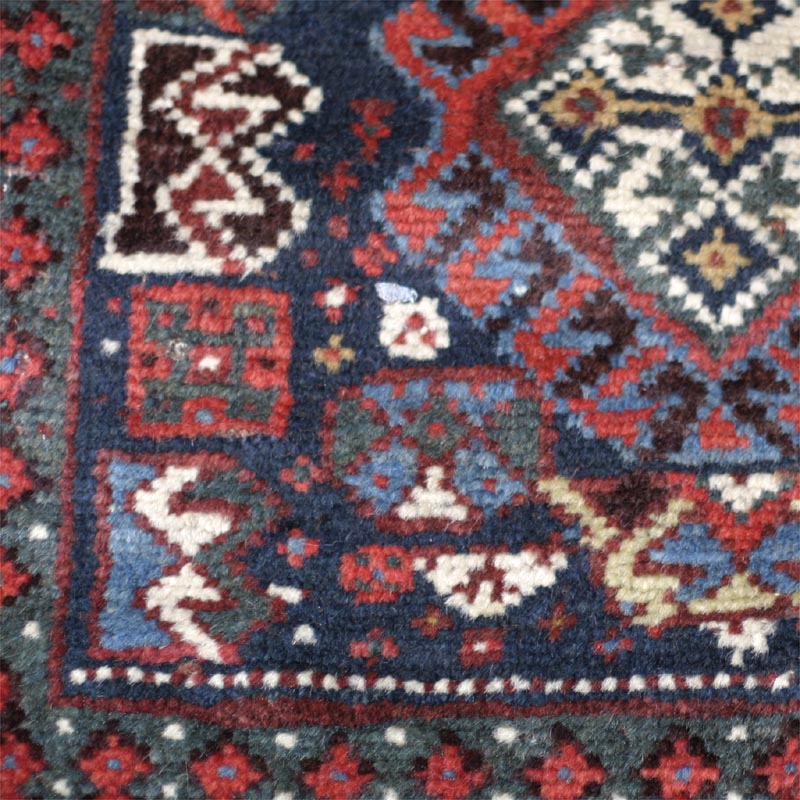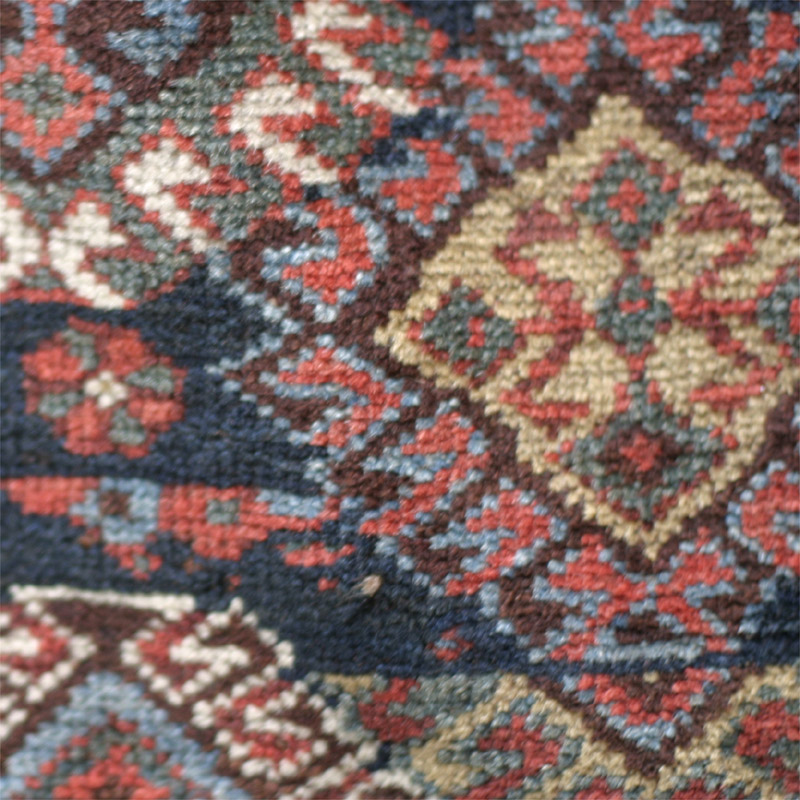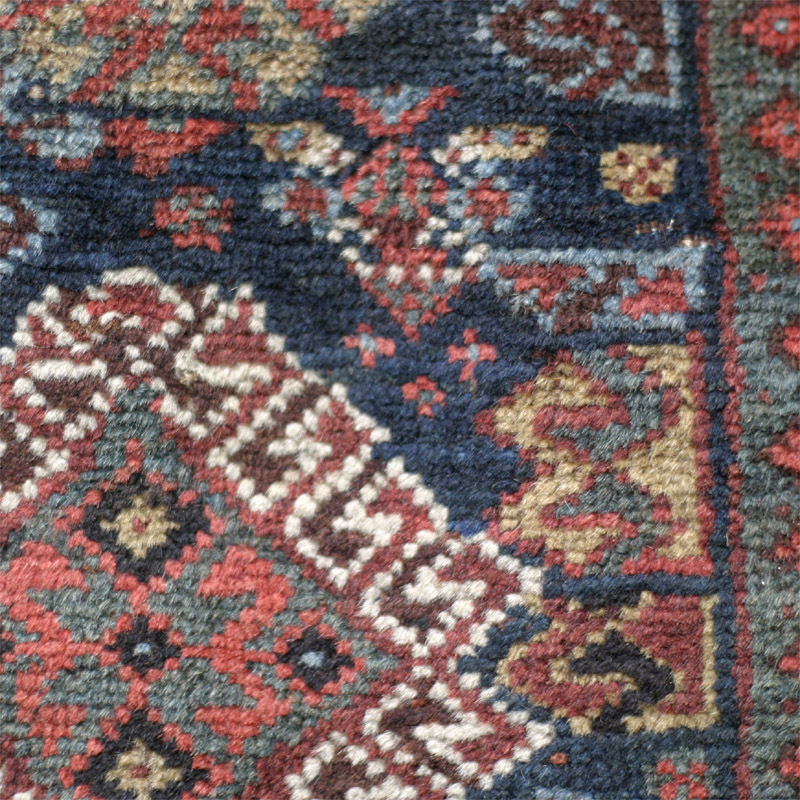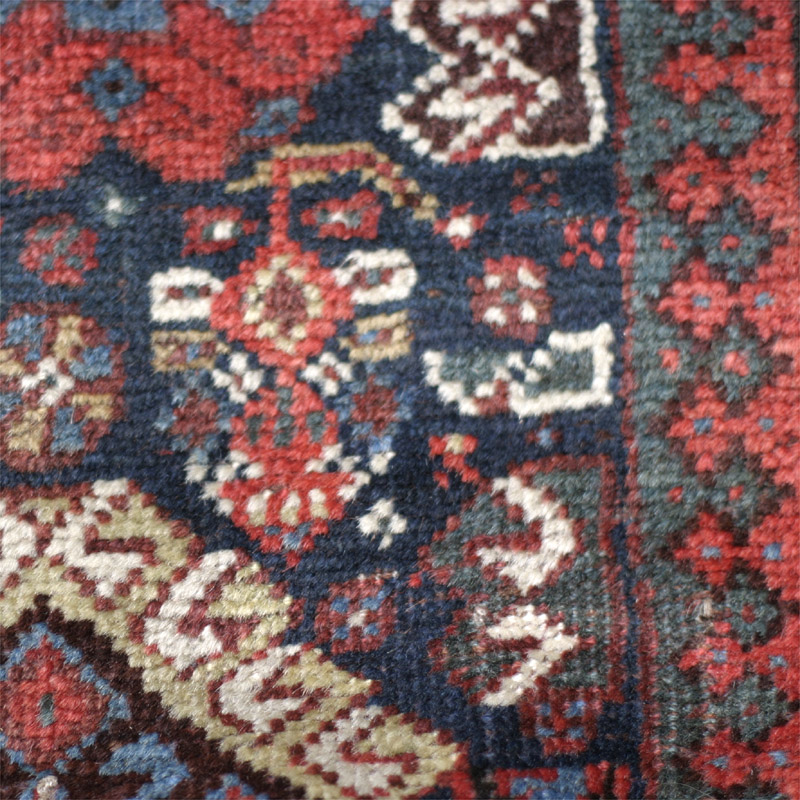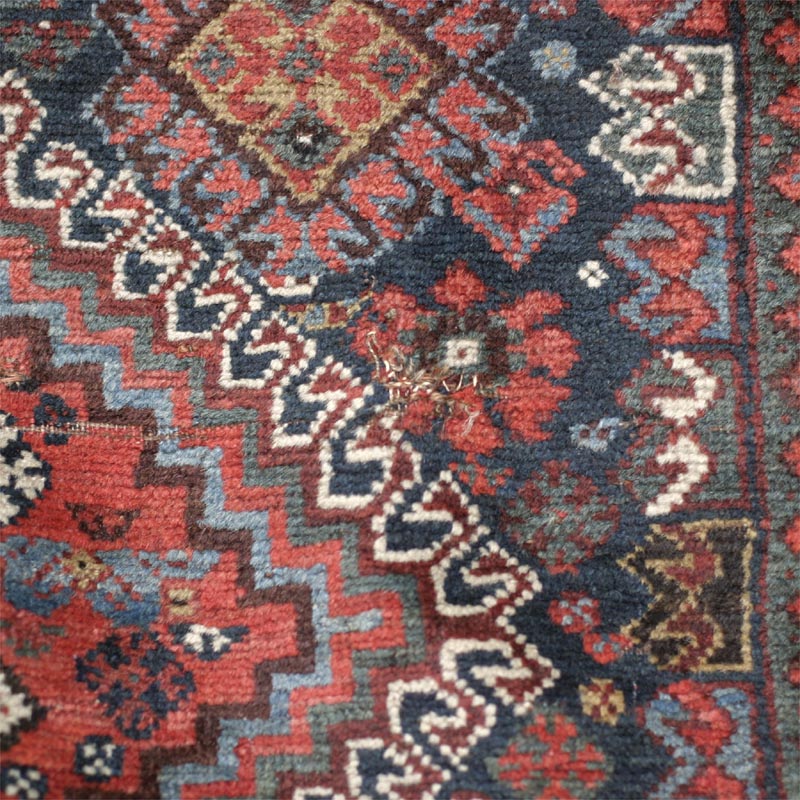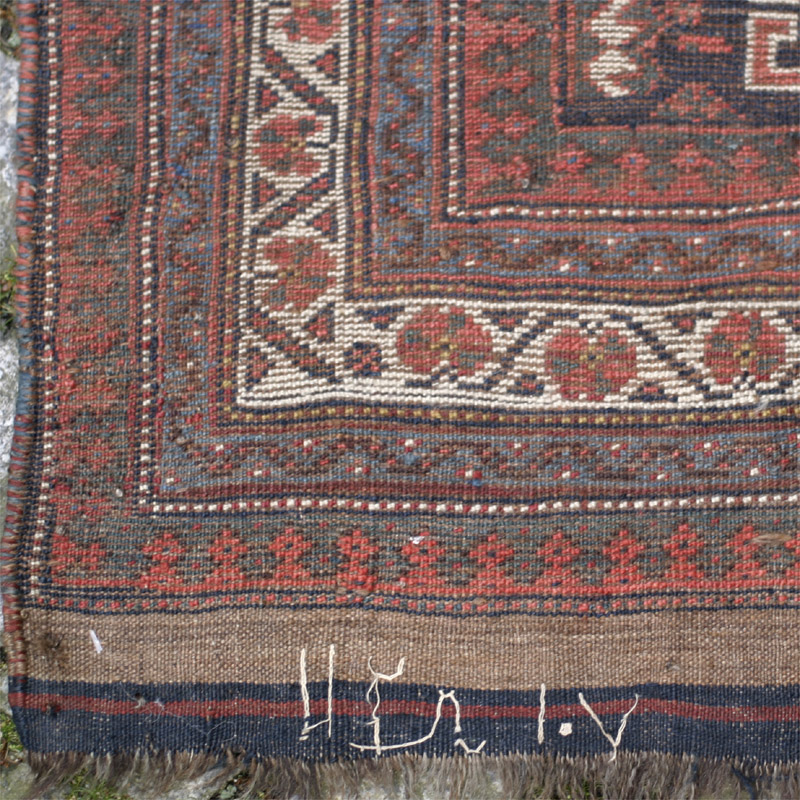Click on image to view at larger size.
Or click here for an image in extra large size (warning: large image!!, 1.5 MB).
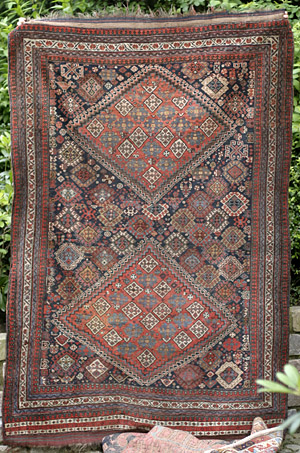
This may be a Shekarlu (Shikharlu in Eiland's rendering of the name) a Luri rug, or a Khamseh rug, probably Basseri or Baharlu subtribe. The improvisational and relaxed approach to the way the motifs are distributed and the space is filled up suggests a tribal origin.
This is what Ian Bennett has to say about this rug: "Attractive and unusual rug by the Shekarlu taifeh of the Qashqa'i Confederation, Fars, south west Persia late 19th century, 8ft.3in. x 5ft.6in. 2.51m. x 1.68m. Slight wear in centre. The attribution of this rug is controversial. The asymmetric knotting suggest that it might be by the Basseri tribe of the Khamseh, as does the dark palette, whilst at the same time ruling out a Lori origin. However, the similarity of many of the minor motifs to those found on rugs attributed to the Shekarlu leads us to prefer this attribution."
Opie in his book Tribal rugs, maintains that "Warps in Shekarlu rugs are invariably ivory; wefts are dyed red-orange" (p.174). On the opposite page, however, he presents a Shekarlu rug (fig. 10.8 on page 175 of his book "Tribal rus") that clearly uses both ivory and dark brown warps. Our piece has predominantly brown warps and brown wefts.
Regarding the type of weave, Eiland & Eiland agree with Bennett in asserting that "the typical Qashqa'i rug is asymmetrically knotted". Over Bennett's point that asymmetric knotting rules out a Luri attribution remains a question mark. Eiland & Eiland, for example, assert that Lori (Luri) work, for which dark brown warps are very typical, may use symmetrical or asymmetrical knots (p.163). The free-form exuberance of hooked diamond motives found in our example, as well as the impromptu style of strewing them out across the field, some with false starts, and mixed with endless knots, as well as the dominance of the large diamond medallions, seem not unlike other Luri work—compare, for example, Opie's fig. 7.16 on page 118, which shows a similar overall layout of large diamond medallions filled with scattered diamonds and endless knots (only that the rug shown by Opie has three diamonds).
The non-depressed weave and the two wefts are common for both Luri and Khamseh work. That Luri rugs often lack the multitude of small figures may speak against a Luri attribution, but several examples shown by Eiland & Eiland shown exactly such multitude. The group of three lower end extra borders containing small diamonds inset in rectangles can be found in many rugs variously atributed to the Qashqa'i Khamseh Confederacy and Luri so it does not help to attribute this piece.
In the end, one has to leave the case undecided. Bennett's point about the similarity of motifs to those of rugs attributed to the Shekarlu carries weight. A peculiar X-shaped motive surrounded by inwards-bending angular hooks is a point in case, as are some small 'open' botehs that are close to the boteh variant used in workshop influenced Qashqa'i rugs. The hooked motif a row of which flanks the field at its ouside seems also typical of Qashqa'i work.
I think one of the strangest features is the rendering of the hooked diamonds. A good part of them carry within their outward hooks reciprocal hooks of another colour (i.e, it is not the main dark blue ground colour but another colour that has been chosen for conrast). In many cases, these orphan hooks appear more figure than ground, forming a kind of zigzag halo around the diamonds. May be chasing this design feature in reliably attributed published examples may lead to a more confident attribution?
The rug is quite large (is this already a small carpet?), it measures 8ft.3in. x 5ft.6in. (251 x 168 cm). Brown wool warps , 2 shoots of brown wool wefts, . The weave is asymmetric open to the left, tight but flexible, floppy, no warp depression. The knot count is h.7.5, v.10.5 to the inch = ca. 79 kpsi. Nice wide striped kilim skirts, mostly intact, fraying a bit, with some corner rounding. Selvages have one cord wrapped alternately in blue and red, may be original.
The condition is quite good, with good short pile and no foundation showing, slight even wear in the centre, and two areas with a small damage closed by old darning, not obvious at all. The large one is visible in one of the images, the otehr I only discovered at close inspection. Small patch scavenged from another rug (1 square inch) at the edge to top kilim. There is some old moth damage in the bottom outer minor borders.
